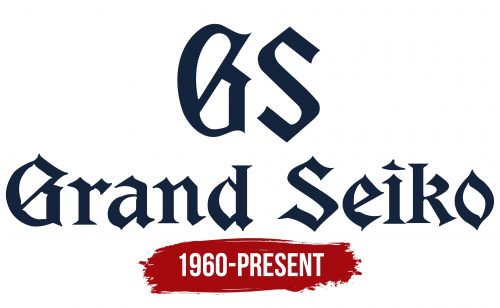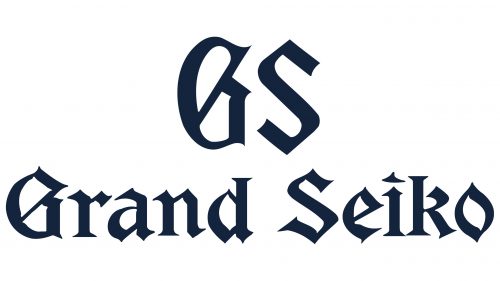The Grand Seiko logo stands out for its elegance, highlighting the traditions and impeccable craftsmanship that are key features of the brand. The emblem focuses on conveying a sense of absolute precision and durability of the products, reflecting the high standard of the items, comparable to the best European brands.
Grand Seiko: Brand overview
Grand Seiko’s history began in 1960, but to understand its origins, we must first look at the Seiko corporation, founded by Kintaro Hattori in 1881. Over many years, Seiko built a strong reputation for making reliable, high-quality timepieces. By the late 1950s, the company set an ambitious goal: to create a watch that could compete with the finest Swiss timepieces.
This goal led to the founding of Grand Seiko in 1960. The first model was released on December 18 of that year. These watches showcased the best craftsmanship from Japanese watchmakers and the most advanced technology. Powered by the caliber 3180, the model offered an accuracy of +12/-3 seconds per day, an outstanding achievement for that era.
The first release was known for its subtle and elegant design. It featured a gold case measuring 35 mm in diameter and 10 mm in thickness, making it relatively small for its time.
1964, the brand introduced its first automatic winding model, the 62GS. This watch used a unique Magic Lever mechanism that wound efficiently in both directions. The crown was positioned at 4 o’clock, an unusual design choice emphasizing the watch’s automatic nature.
A major milestone came in 1967 with the release of the 44GS model. This watch established the brand’s design philosophy for years to come. Its polished, beveled case edges, multifaceted indices, and hands created a striking interplay of light and shadow.
In 1968, the company launched the 61GS, its first watch with a high-frequency movement, operating at 36,000 vibrations per hour (10 beats per second). This high frequency ensured extraordinary accuracy.
The 45GS model, introduced in 1969, achieved the brand’s highest level of precision, with an accuracy of +5/-3 seconds per day, exceeding the standards set by Swiss chronometers.
1970, the 61GS V.F.A. (Very Fine Adjusted) model was released. It offered an accuracy of +/-2 seconds per day, further showcasing the commitment to perfection in mechanical timekeeping.
The company made history again in 1988 by introducing its first quartz watch. Although originally known for luxury mechanical watches, it applied its expertise to high-end quartz timepieces. 1998, after a long break from mechanical watches, the brand released the SBGW004, a manually wound model that reaffirmed its dedication to traditional watchmaking.
A major technological breakthrough occurred in 2004 when the company introduced the Spring Drive movement. This innovation combined the precision of quartz with the smooth motion of a mechanical second hand, becoming a hallmark and solidifying its reputation as a leader in the watch industry.
The brand released several special models to celebrate its 50th anniversary in 2010, including a reproduction of the original 1960 watch.
A pivotal moment in the company’s history came in 2017 when it became an independent entity separate from Seiko. This allowed the brand to expand its global presence and strengthen its position in the luxury watch market.
In 2020, to celebrate its 60th anniversary, the brand released a series of limited-edition models, including a modern interpretation of the iconic 44GS.
In 2022, it introduced the 9SC5 caliber, its first watch featuring a constant-force movement, demonstrating its dedication to precision and stability.
By 2023, the company had firmly established itself as one of the world’s top luxury watchmakers, known for its commitment to quality, innovation, and a distinctly Japanese approach to watchmaking.
The history reflects a constant pursuit of excellence, innovation, and respect for Japanese watchmaking traditions. From the first model in 1960 to today’s advanced timepieces, the brand has continued its vision of creating the highest-quality watches that balance precision, durability, and beauty.
Meaning and History
What is Grand Seiko?
This is an example of Japanese watchmaking, combining advanced technology with traditional craftsmanship. Initially conceived as a premium line of Seiko, this brand has evolved into a standalone luxury brand that successfully competes with Swiss watchmakers in the high-end segment. The brand’s watches are renowned for their attention to detail and are equipped with highly precise movements, whether mechanical, quartz, or exclusive Spring Drive technology. Inspired by Japanese aesthetics, the brand’s design focuses on elegance and functional beauty. The watches are known for their perfectly legible dials, sharp hands, and meticulously polished cases, created using the Zaratsu technique, which ensures distortion-free surfaces.
1960 – today
The manufacturer’s logo attracts attention with its Gothic style, which seems far removed from the traditional Japanese culture where the brand originated. This choice was driven by the desire to create modern and precise products capable of competing with and surpassing leading European brands.
Instead of traditional characters, a German-style font reminiscent of Swiss standards was chosen for visual identity. The Gothic lettering is associated with classic European traditions, conveying ideas of precision and craftsmanship, creating the image of a high-quality and prestigious brand.
At the top of the logo is a monogram, often used in watch designs, reminiscent of the style associated with brands like Audemars Piguet. The full brand name is placed below, combining European and Japanese lexicons. Both words symbolize “magnificence,” “craftsmanship,” and “grandeur,” which accurately reflects the brand’s philosophy of creating watches that meet the highest standards of quality and precision.





